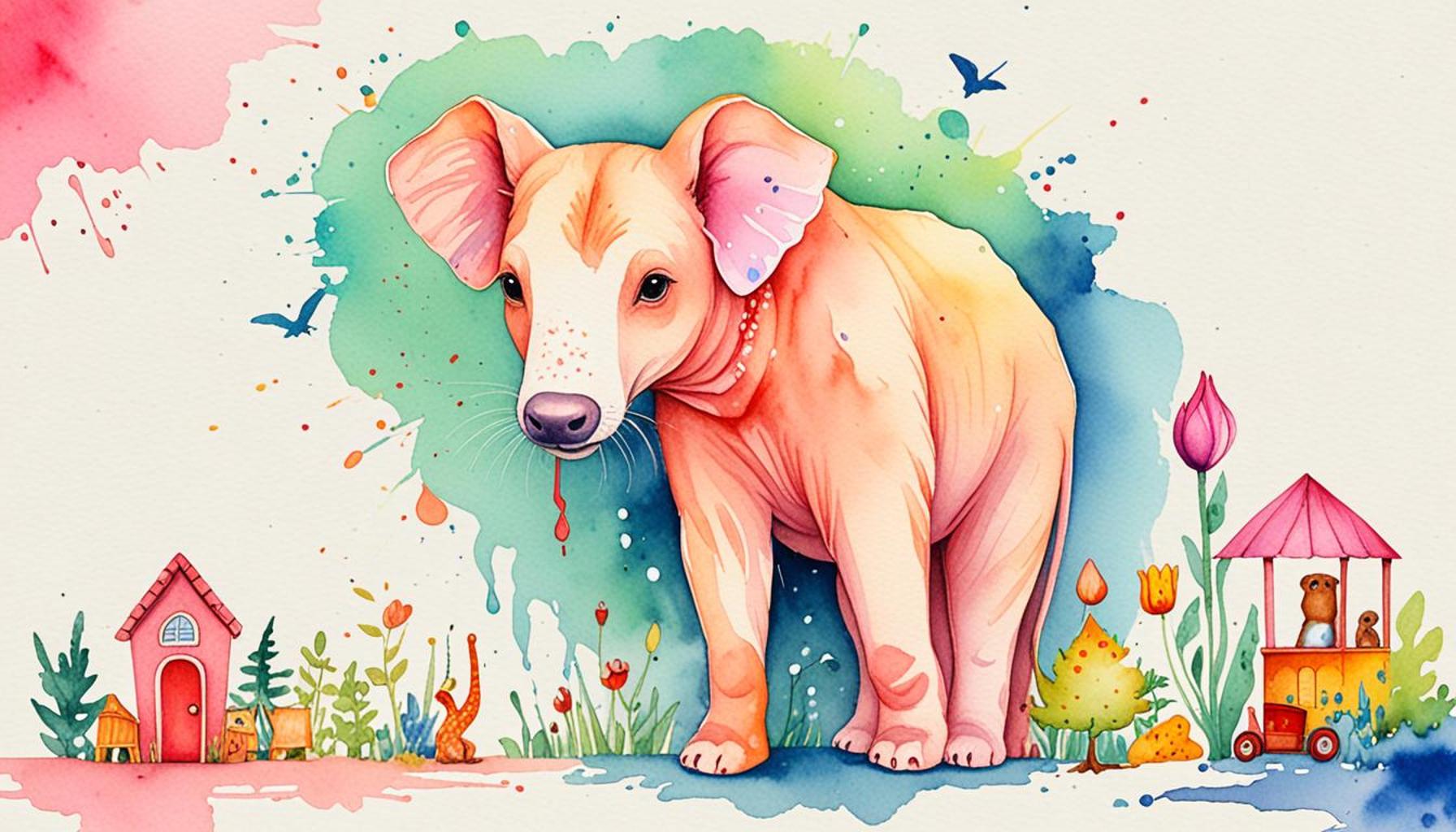How Separation Anxiety Affects the Behavior of Dogs and Cats

Understanding the Impact of Separation Anxiety on Pets
Every pet owner knows the joys of having a furry companion. However, separation anxiety can turn that joy into distress for both pets and their owners. Understanding how this condition affects dogs and cats is essential for nurturing a happy and healthy environment. Many pet owners may be surprised to learn that separation anxiety is not just a behavioral quirk, but a genuine emotional challenge that many animals face.
Separation anxiety typically manifests in various behaviors that pet owners should be aware of. Common signs include:
- Excessive barking or meowing: Vocal expressions of distress can be alarming. For instance, a dog may bark incessantly when left alone for even short periods, often leading to complaints from neighbors.
- Destructive behavior: Chewing furniture or scratching doors may occur. This behavior often results from the pet’s attempt to alleviate their anxiety or an expression of panic about being left alone.
- Inappropriate elimination: Pets may urinate or defecate indoors despite being trained, as the stress from separation overwhelms their usual control.
These reactions stem from a deep-seated fear of being alone, which can lead to significant behavioral issues if left unchecked. In the United States, studies suggest a startling number of pets experience this form of anxiety, particularly during transitions such as moving or changes in family structure, such as a family member leaving for college or a divorce scenario. In fact, research indicates that as many as 15% to 30% of pets may experience notable signs of separation anxiety.
In some cases, separation anxiety can even lead to physical health problems, such as gastrointestinal issues due to stress or a weakened immune system. This exacerbates the need for understanding and intervention. One effective approach is to gradually acclimate pets to being alone through desensitization techniques. For example, pet owners might start by leaving their pets alone for just a few minutes and progressively increase the duration to build their confidence.
Additionally, professional advice from a veterinarian or an animal behaviorist can provide tailored strategies to manage and mitigate these behaviors. Products like anxiety wraps or calming pheromone diffusers can also offer relief. By recognizing the symptoms and exploring these innovative solutions, pet owners can create a more peaceful environment for their beloved animals, enhancing their well-being and nurturing a rewarding companionship.
LEARN MORE: Click here to discover the signs of stress and anxiety in your pets
Behavioral Manifestations of Separation Anxiety
Understanding how separation anxiety affects the behavior of dogs and cats is crucial for pet owners looking to provide the best care for their companions. The emotional turmoil caused by this condition can lead to various distressing behaviors that impact both the pets and their owners. When animals experience separation anxiety, they often exhibit a range of behaviors that signal their discomfort and fear of being alone.
For dogs, the signs of separation anxiety can intensify quickly upon the departure of their owners. One of the most common manifestations is excessive barking. This vocalization serves as a cry for help, often resulting in disturbances that can strain relationships with neighbors. In addition to barking, dogs may also engage in some form of destructive behavior. They might chew on furniture, tear up household items, or dig at doors in an attempt to escape and reunite with their owners. Such actions are not simply mischievous; they are responses rooted in anxiety and fear, revealing the emotional struggles of the pet.
On the other hand, cats can also display clear signs of separation anxiety, although their behaviors might differ slightly from those of dogs. For example, a cat may respond to being left alone by urinating or defecating outside their litter box. This inappropriate elimination can occur due to overwhelming stress and a lack of control. Moreover, some cats may resort to over-grooming, leading to skin irritations or bald patches, as a coping mechanism to manage their anxiety.
Research indicates that the prevalence of separation anxiety in pets is alarmingly high, with studies suggesting that between 15% to 30% of pets exhibit significant signs of this emotional disorder. Factors contributing to this condition include recent changes in the household, such as moving homes, the introduction of new pets, or any major life transitions affecting the family dynamic. For instance, children leaving for college or changes brought about by divorce can trigger anxiety in pets, leading to behaviors that may appear puzzling to their owners.
In order to manage these distressing behaviors effectively, it is essential for pet owners to recognize the underlying causes of separation anxiety. Interventions can be tailored based on the individual pet’s needs. Professional guidance from a veterinarian or an animal behaviorist can prove invaluable, offering pet owners educated insights and practical strategies. These may include implementing desensitization techniques, which help pets to gradually acclimate to being alone, as well as incorporating anxiety-reducing products such as calming pheromone diffusers or anxiety wraps.
By understanding the behaviors associated with separation anxiety, pet owners can foster a supportive environment that minimizes the stress their pets experience when alone. Addressing these issues not only improves the emotional well-being of the pet but also enhances the bond between owner and animal, creating a healthier and happier home for both parties.
| Category | Description |
|---|---|
| Behavioral Changes in Dogs | Dogs exhibit signs of distress such as barking, howling, or destructive behavior when left alone, reflecting their attachment to their owners. |
| Behavioral Changes in Cats | Cats may display withdrawal or increased aggression towards other pets, highlighting their own struggle with solitude. |
Understanding the intricacies of how separation anxiety affects both dogs and cats can open a dialogue about the solutions available to pet owners. Furthermore, behavioral signs such as excessive grooming in cats or inappropriate elimination can often be mistaken for other issues. Recognizing these symptoms as rooted in anxiety is crucial for treatment and management.With additional insights, pet owners can learn about various methods to alleviate symptoms. Dog owners can benefit from gradually training their pets to feel comfortable being alone, while cat owners might explore environmental enrichment strategies to keep their pets engaged and less anxious. Thus, the exploration of this issue not only provides a framework for owners to better understand their pets but also establishes a pathway towards effective communication and behavioral rehabilitation.
DIVE DEEPER: Click here to learn why socialization matters
Understanding the Triggers of Separation Anxiety
The emotional state of pets, particularly dogs and cats, is closely tied to their environment and daily routines. An essential component of addressing separation anxiety is identifying the triggers that may provoke anxiety in these animals. A variety of factors can cause or exacerbate this fear, leading to distressing behaviors. For instance, changes in a pet’s environment can greatly affect their emotional stability. Moving to a new home, changes in family structure, or the arrival of a new baby or pet can unsettle them. Pets thrive on routine, and any disruption can lead to increased anxiety.
In addition to environmental changes, the bonding style between the pet and owner can influence the likelihood of separation anxiety. Dogs that are overly attached to their owners may find it especially challenging when left alone. Breeds known for their loyalty and need for companionship, such as Labrador Retrievers and Border Collies, may be particularly susceptible. Furthermore, pets that have faced prior trauma, such as abandonment or abuse, are more likely to exhibit anxiety when left alone again. In such cases, the emotional scars linger, making the prospect of separation a source of panic.
Cats, while often perceived as more independent, are not immune to separation anxiety. They can develop a strong attachment to their owners, making it difficult for them to cope when left alone. Unlike dogs, who may vocalize their distress, cats might become withdrawn or display behavioral issues such as scratching furniture or exhibiting significant litter box aversion. Understanding that separation anxiety can manifest differently in cats demands that owners educate themselves about feline behavior. Recognizing these nuanced signs is crucial for proper intervention.
Statistics and Studies on Separation Anxiety
A wealth of research has been dedicated to understanding the prevalence and implications of separation anxiety in pets. A staggering up to 30% of dogs and nearly 15% of cats show significant signs of this anxiety disorder. A study published in the Journal of Veterinary Behavior notes that certain breeds, such as German Shepherds, Golden Retrievers, and Chihuahuas, demonstrate a higher tendency toward separation issues compared to others. Understanding these breeds can help potential pet owners make informed decisions regarding their suitability for a household environment that requires regular alone time.
Moreover, shelters and rescue organizations often note that pets with separation anxiety are at a higher risk of being returned after adoption, contributing to the already high rate of pet homelessness. This is an essential consideration for potential adopters; understanding and addressing separation anxiety not only aids in a smoother transition for the pet but also promotes lifelong companionship. Many shelters now include behavioral assessments during the adoption process to ensure that both parties are suited to each other’s needs.
Risk Factors and Long-Term Implications
Failure to address separation anxiety can have long-term implications for a pet’s behavior and overall health. Chronic anxiety can lead to severe health issues such as gastrointestinal problems, as stressed pets may exhibit changes in eating and digestion. In addition, isolation from socialization opportunities can result in behavioral issues, including aggression or excessive fearfulness, making the pet more difficult to manage in social situations. As such, early detection and intervention are pivotal in preventing the negative spiral of untreated anxiety.
In conclusion, it is evident that separation anxiety affects not only the behavior of dogs and cats but also their overall well-being. By identifying triggers, understanding how they manifest differently in various species, and recognizing the broader implications of this condition, pet owners can act proactively to create a supportive environment that fosters emotional stability and happiness.
DIVE DEEPER: Click here to learn more about dog communication
Final Thoughts on Separation Anxiety in Pets
In summary, separation anxiety presents a significant challenge for both dogs and cats, influencing their behavior and overall quality of life. Understanding that these emotions are not merely a nuisance but rather a profound issue that can severely disrupt a pet’s well-being is crucial for responsible pet ownership. By deciphering the roots and triggers of anxiety, from environmental shifts to the depth of attachment, owners can take informed steps to alleviate their pets’ distress.
As highlighted, the impact of not addressing separation anxiety goes beyond just behavioral issues; it can lead to serious health consequences and can jeopardize the bond between pet and owner. It is encouraging to see a growing awareness among veterinarians and shelters regarding this condition, with many organizations enhancing adoption protocols to better assess and address potential behavioral problems early in a pet’s life.
For pet owners, proactive measures, including gradual desensitization and creating a safe, enriching environment, can greatly ease the burden of separation anxiety. Additionally, consulting with veterinarians and animal behaviorists can result in tailored strategies that suit the unique needs of each pet. As more people recognize the importance of mental health in animals, there is an opportunity to foster healthier, happier companions.
Ultimately, by prioritizing our pets’ emotional needs, we can ensure they thrive both in our presence and absence, paving the way for a harmonious and fulfilling human-animal relationship.


